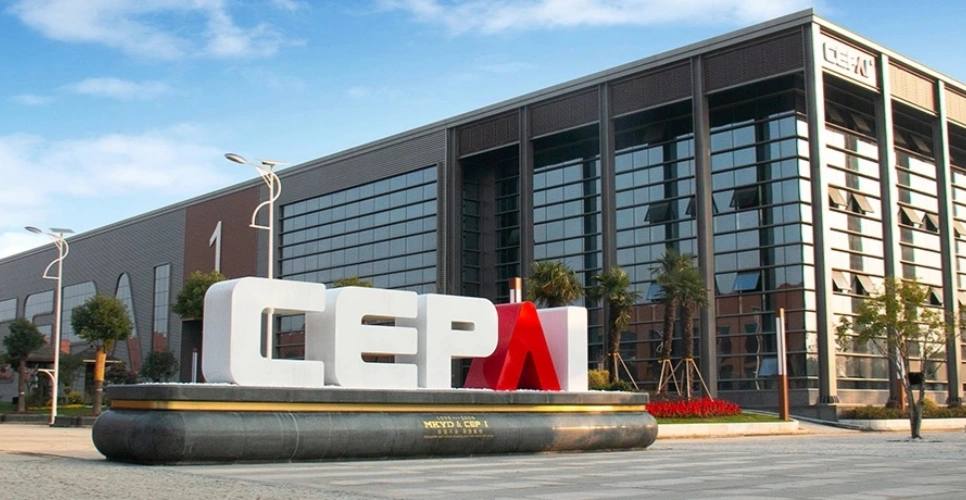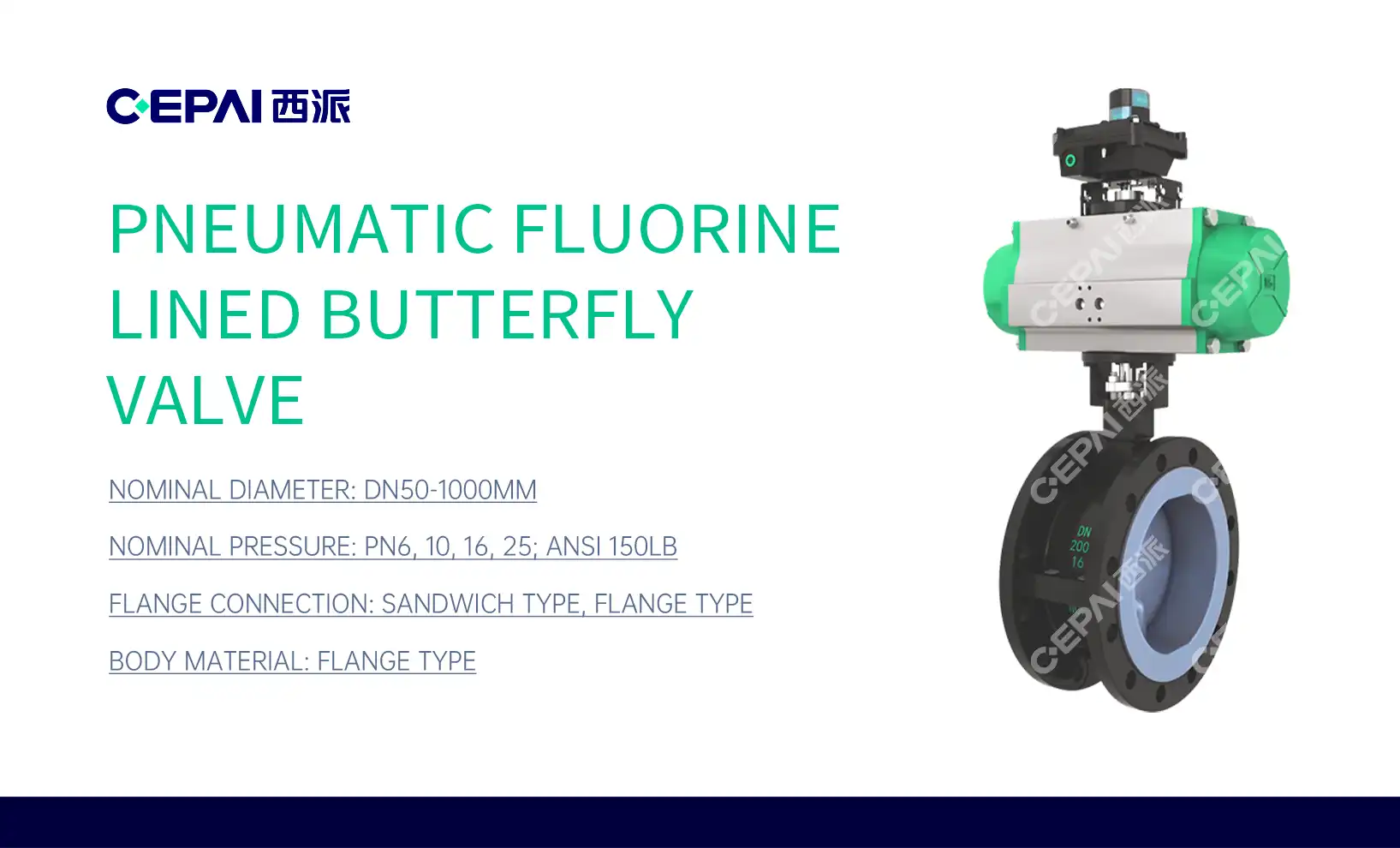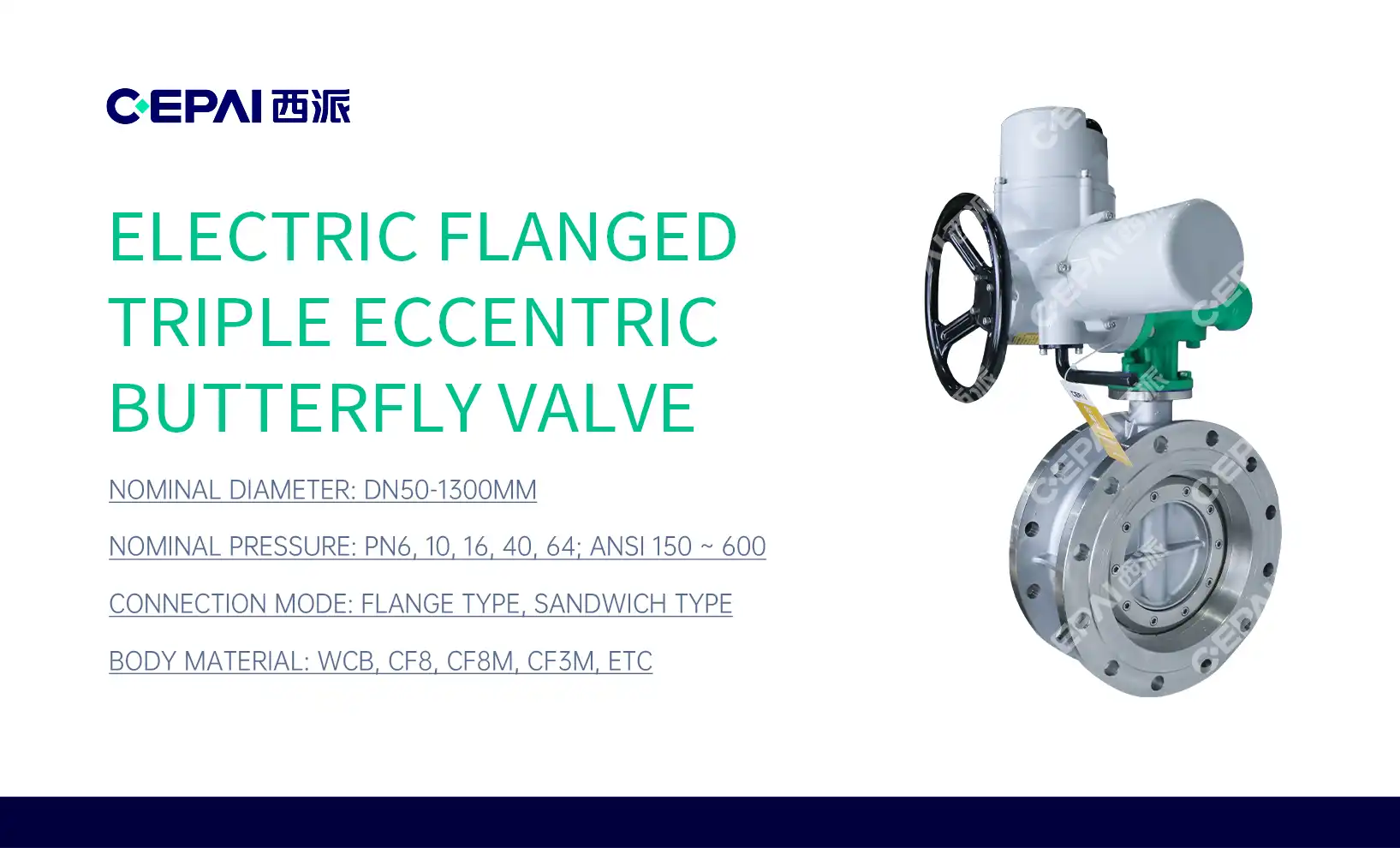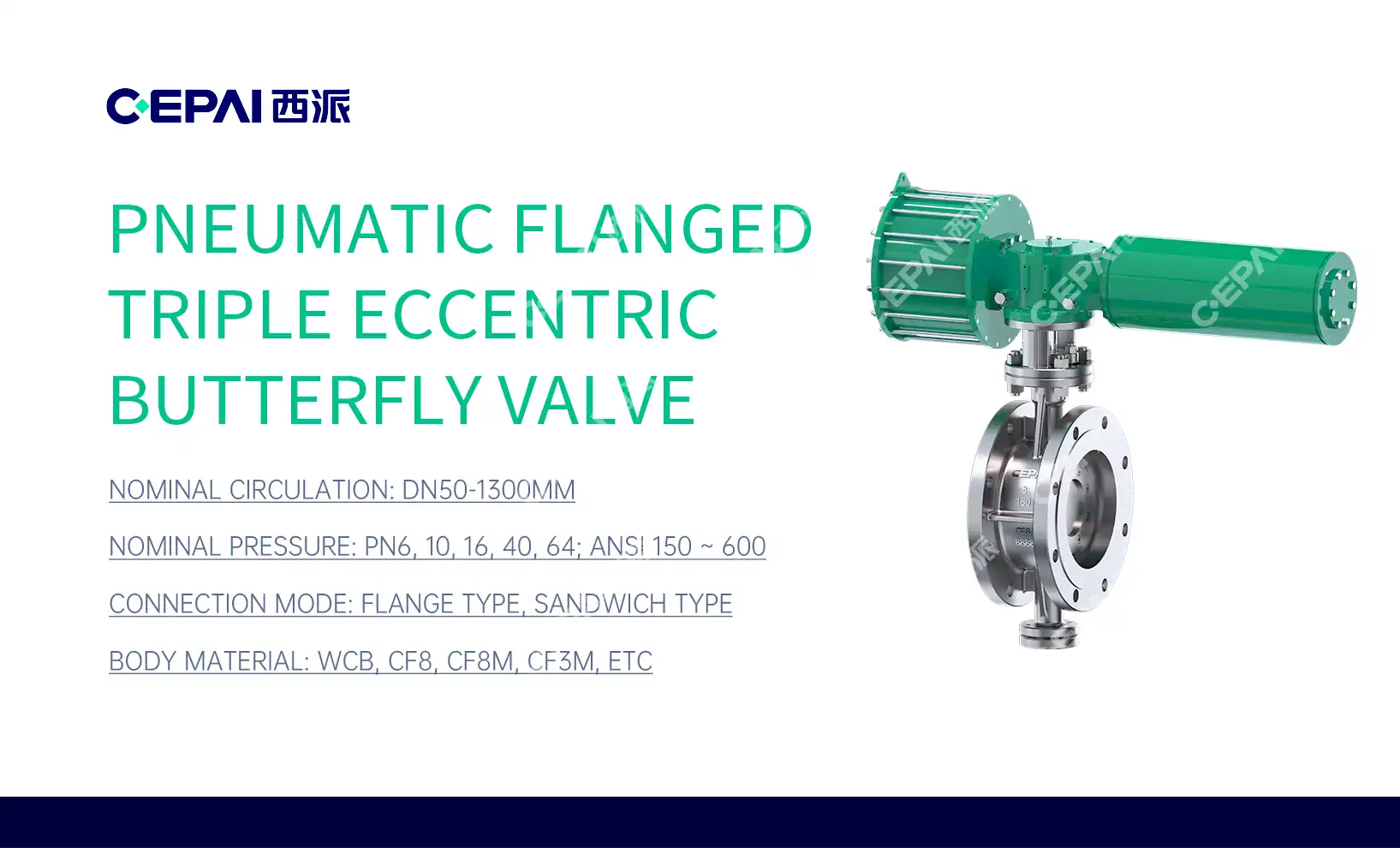Design and Operation: Butterfly Valve vs Control Valve
Butterfly Valve Design and Functionality
Butterfly valves feature a relatively simple design, consisting of a circular disc mounted on a rotating shaft. When the valve is fully open, the disc is parallel to the flow, allowing maximum passage. As the disc rotates 90 degrees, it gradually restricts flow until it completely blocks the pipe when perpendicular to the flow direction. This quarter-turn operation makes butterfly valves quick and easy to operate, often requiring minimal torque.
The sealing mechanism in butterfly valves typically involves a resilient seat that makes contact with the disc edge when closed. This design allows for bubble-tight shutoff in many applications. Butterfly valves come in various materials and sizes, suitable for different pressure ratings and media types. Their compact design makes them ideal for installations where space is limited.
Control Valve Design and Functionality
Control valves are more complex in design, incorporating elements that allow for precise flow regulation. The most common types include globe valves, diaphragm valves, and angle valves. These valves use a variable-position plug or diaphragm to adjust the flow area, providing fine control over flow rates and pressures.
The operation of control valves often involves actuators, which can be pneumatic, hydraulic, or electric. These actuators receive signals from control systems, allowing for automated and precise adjustments based on process requirements. The internal trim of control valves can be customized with various flow characteristics, such as linear, equal percentage, or quick opening, to suit specific application needs.
Comparative Analysis of Operating Principles
While both valve types control flow, their operating principles differ significantly. Butterfly valves operate on the principle of flow obstruction, with the disc acting as a barrier. This makes them excellent for on-off applications or situations requiring quick flow isolation. Control valves, conversely, work by modulating the flow path, allowing for incremental adjustments. This makes them superior for applications requiring precise flow control or where process variables need constant adjustment.
The simplicity of butterfly valves often translates to lower maintenance requirements and costs. However, control valves offer greater flexibility in terms of flow characteristics and control precision, albeit at a higher initial cost and complexity. The choice between the two often depends on the specific requirements of the application, including the need for precise control, frequency of operation, and the nature of the media being controlled.
Applications and Performance Characteristics
Typical Applications for Butterfly Valves
Butterfly valves find extensive use in applications where large flow volumes need to be managed efficiently. They are particularly well-suited for water treatment plants, where their ability to handle large pipe diameters makes them ideal for main water lines. In the oil and gas industry, butterfly valves are often used in pipelines for crude oil and natural gas transportation, offering reliable shut-off capabilities.
The food and beverage industry also benefits from butterfly valves, especially in processes involving low-pressure liquids or gases. Their sanitary design and ease of cleaning make them suitable for handling various food products. In HVAC systems, butterfly valves are commonly used to control airflow in ventilation ducts, appreciating their low-pressure drop characteristics.
Typical Applications for Control Valves
Control valves excel in processes requiring precise flow regulation and are widely used in the chemical and petrochemical industries. They play a crucial role in managing the flow of various chemicals, ensuring accurate mixing ratios and reaction rates. In oil refineries, control valves are essential for maintaining optimal operating conditions in distillation columns and other critical processes.
The power generation sector relies heavily on control valves for managing steam flow in turbines and boiler feedwater systems. These valves help maintain the delicate balance necessary for efficient power production. In pharmaceutical manufacturing, control valves are indispensable for maintaining the exact conditions required for drug synthesis and purification processes.
Performance Comparison in Various Scenarios
When it comes to flow capacity, butterfly valves generally offer higher flow rates with lower pressure drops compared to control valves of similar size. This makes them more energy-efficient in applications where large volumes need to be moved quickly. However, control valves outperform butterfly valves in scenarios requiring precise flow modulation or where process conditions frequently change.
In terms of rangeability, which is the ratio between maximum and minimum controllable flow, control valves typically offer superior performance. This makes them more versatile in processes with wide-ranging flow requirements. Butterfly valves, while limited in their ability to provide fine control, excel in applications requiring rapid shut-off or where tight shut-off is crucial.
The response time to changes in demand also differs between the two valve types. Butterfly valves can quickly move from fully open to fully closed positions, making them ideal for emergency shut-off scenarios. Control valves, while potentially slower in full-stroke operation, offer more responsive and accurate control for small adjustments, which is critical in maintaining steady-state conditions in complex processes.
Selection Criteria and Considerations
Factors Influencing Valve Selection
Choosing between a butterfly valve and a control valve requires careful consideration of several factors. The nature of the process fluid is paramount; its viscosity, temperature, and potential for corrosion or erosion can significantly influence the valve choice. Butterfly valves often handle clean, low-viscosity fluids well, while control valves can be engineered to manage a wider range of challenging media.
Operating conditions, including pressure, temperature, and flow rates, play a crucial role in valve selection. Butterfly valves typically excel in low to medium-pressure applications, while control valves can be designed for high-pressure, high-temperature environments. The required level of flow control precision is another critical factor. If the process demands fine-tuned adjustments, a control valve is often the better choice.
Space constraints and installation requirements should also be considered. Butterfly valves' compact design makes them suitable for tight spaces, while control valves might require more room for actuators and accessories. Additionally, the frequency of operation and the need for fail-safe functionality can influence the decision between these valve types.
Cost-Benefit Analysis
Initial costs often favor butterfly valves, which are generally less expensive to purchase and install due to their simpler design. However, the long-term cost-benefit analysis should consider factors beyond the initial investment. Control valves, while more expensive upfront, can offer significant savings in operational efficiency and process optimization over time, especially in applications requiring precise control.
Maintenance costs and frequency should be factored into the decision. Butterfly valves typically require less maintenance due to their simple construction, potentially leading to lower long-term costs in some applications. Control valves, with their more complex components, may require more frequent maintenance but often provide better long-term value in processes where precise control translates to improved product quality or energy savings.
Energy efficiency is another important consideration in the cost-benefit analysis. The lower pressure drop characteristics of butterfly valves can result in energy savings in pumping or compression costs, particularly in large-scale operations. However, the precise control offered by control valves can lead to optimized process efficiency, potentially offsetting higher energy costs in certain applications.

Industry-Specific Selection Guidelines
Different industries have unique requirements that influence valve selection. In the water treatment industry, for example, butterfly valves are often preferred for main lines due to their ability to handle large volumes efficiently. However, control valves might be chosen for chemical dosing applications where precise control is critical.
The oil and gas industry often uses a combination of both valve types. Butterfly valves are common in pipeline applications for their reliable shut-off capabilities, while control valves are essential in refineries for managing complex processes. The choice often depends on the specific stage of the operation and the level of control required.
In the pharmaceutical industry, where cleanliness and precision are paramount, control valves are typically favored for their ability to provide accurate flow control and their availability in sanitary designs. However, butterfly valves might still find use in utility systems or less critical applications within pharmaceutical facilities.
Ultimately, the selection between butterfly valves and control valves should be based on a thorough analysis of the specific application requirements, considering factors such as process conditions, control needs, maintenance capabilities, and long-term operational costs.
Conclusion
In the realm of industrial valve selection, understanding the distinctions between butterfly valves and control valves is crucial for optimizing process efficiency and reliability. Butterfly valves excel in applications requiring quick operation and handling large volumes, making them ideal for water treatment, HVAC systems, and certain oil and gas operations. Control valves, with their precision and versatility, are indispensable in chemical processing, power generation, and pharmaceutical manufacturing where exact flow regulation is paramount. The choice between these valve types should be guided by a comprehensive evaluation of process requirements, operational conditions, and long-term cost considerations. By carefully weighing these factors, industries can ensure they select the most appropriate valve solution, enhancing their operational performance and maintaining a competitive edge in their respective fields.
FAQs
1. What is the main difference between a butterfly valve and a control valve?
Butterfly valves use a rotating disc for on-off or basic throttling, while control valves offer precise flow regulation through variable positioning of internal components.
2. In which situations would a butterfly valve be preferred over a control valve?
Butterfly valves are preferred in applications requiring quick shut-off, handling large volumes, or where space is limited.
3. Can butterfly valves be used for precise flow control?
While butterfly valves can provide some level of throttling, they are not ideal for precise flow control compared to dedicated control valves.
4. Are control valves more expensive than butterfly valves?
Generally, control valves are more expensive due to their complex design and precision components, but they offer greater control capabilities.
5. How do maintenance requirements differ between these valve types?
Butterfly valves typically require less maintenance due to their simpler design, while control valves may need more frequent attention due to their complex components.
Expert Valve Solutions for Industrial Applications | CEPAI
At CEPAI, we specialize in providing cutting-edge valve solutions for the energy sector, including high-performance butterfly valves and precision control valves. Our expertise in valve manufacturing ensures that we deliver products tailored to meet the demanding requirements of oil and gas, petrochemical, and power generation industries. As a leading valve supplier and manufacturer, we offer innovative designs that enhance operational efficiency and safety. For expert advice on selecting the right valve for your specific application or to learn more about our extensive product range, contact our team of specialists at cepai@cepai.com.

References
Smith, J. (2020). "Industrial Valve Selection: A Comprehensive Guide." Journal of Process Engineering, 45(3), 278-295.
Johnson, R. et al. (2019). "Comparative Analysis of Butterfly and Control Valves in Oil and Gas Applications." International Journal of Valve Technology, 12(2), 145-160.
Brown, A. (2021). "Advancements in Control Valve Design for Chemical Processing." Chemical Engineering Progress, 117(8), 35-42.
Lee, S. and Park, K. (2018). "Energy Efficiency Considerations in Industrial Valve Selection." Energy & Fuels, 32(9), 9456-9468.
Miller, T. (2022). "Valve Maintenance Strategies for Improved Plant Reliability." Plant Engineering, 76(4), 52-58.
Garcia, M. et al. (2020). "Performance Evaluation of Butterfly Valves in Water Distribution Systems." Water Resources Management, 34(11), 3489-3502.





